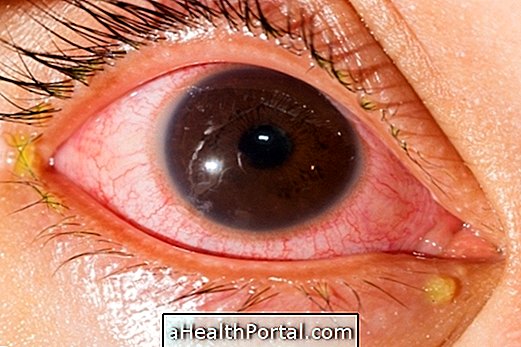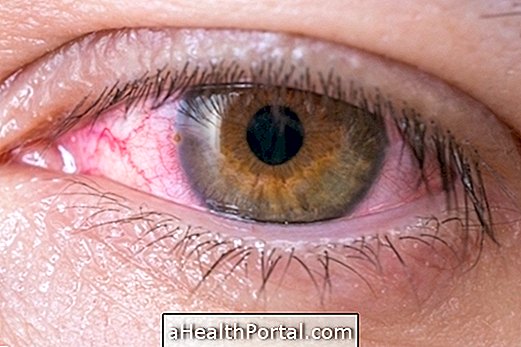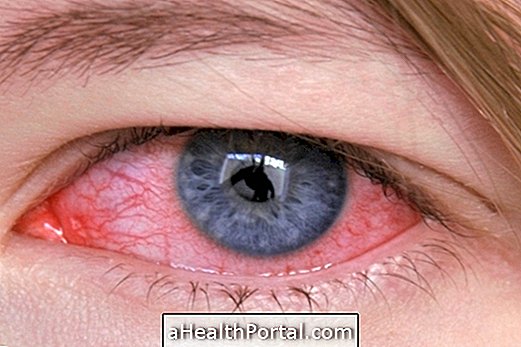Uveitis corresponds to inflammation of the uvea, which is part of the eye formed by the iris, ciliary body and choroid, which form the front of the eye, resulting in red eye, light sensitivity and blurred vision.
The uveitis can be classified as anterior, posterior, intermediate or diffuse according to the region of the affected eye and should be treated quickly, as it can lead to complications such as cataracts, glaucoma, progressive loss of vision and blindness.

Causes of Uveitis
Uveitis is one of the symptoms of various systemic or autoimmune diseases, such as for example rheumatoid arthritis, spondyloarthritis, juvenile rheumatoid arthritis, sarcoidosis and Behçet's disease, for example. In addition, it can happen due to infectious diseases such as toxoplasmosis, syphilis, AIDS, leprosy and onchocerciasis.
Uveitis can also be a result of metastases or tumors in the eyes, and may occur due to the presence of foreign bodies in the eye, corneal lacerations, ocular perforation and burns by heat or chemical substances.
The diagnosis of the disease is made based on the patient's life history, ophthalmic exams and other clinical and blood tests to identify the disease responsible for uveitis.
Main symptoms
Uveitis usually causes conjunctivitis-like symptoms, with signs such as reddened eyes, pain, light sensitivity, blurred vision and blurred vision. Learn how to differentiate uveitis from conjunctivitis.
In addition, small spots may appear that smear the vision and change places according to eye movement and the intensity of light in the place, being called fly flies.
When uveitis symptoms last for a few weeks or a few months and then disappear, the condition is classified as acute, however, when symptoms persist for several months or years and there is no complete disappearance of symptoms, it is classified as chronic uveitis .
Also know the main causes of redness in the eyes.
How is the treatment done?
The treatment of uveitis is aimed at relieving symptoms and is done according to the cause, and may include the use of anti-inflammatory drops, corticosteroids or antibiotics, for example. In more severe cases, surgery may be recommended.
Uveitis is curable, especially when identified in the early stages, but it may also be necessary to perform treatment at the hospital so that the patient receives medication directly into the vein. After treatment, it is necessary for the person to perform routine exams every 6 months to 1 year in order to monitor the health of the eyes.


























